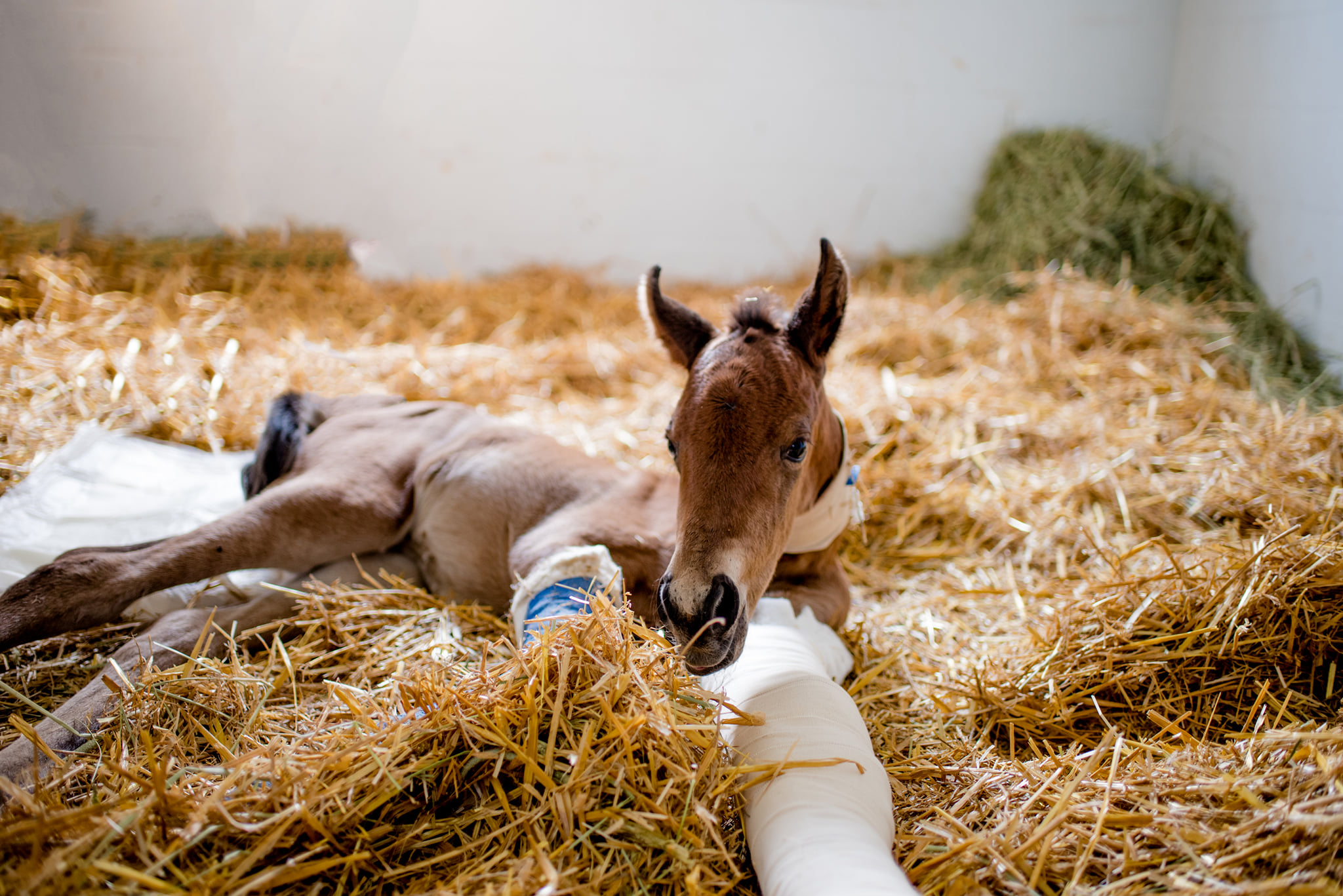Written by Dr. Chris Stokes
2021-2022 Peterson Smith Equine Hospital + Complete Care Hospital Intern
What are angular limb deformities?
An angular limb deformity is defined as conformational deviation of a limb, looking from the front or back of the limb, affecting newborn and young foals. The most common of these is valgus (lateral, or away from the body) and varus (medial, or towards the body) deviations and can affect the carpus (knee), tarsus (hock) and metacarpophalangeal (fetlock) joints in most cases. Congenital causes include laxity of soft tissue surrounding the joints, failure of certain bones to ossify (turn into bone from cartilage), limb rotation, and mechanical deformation of long bones while in the uterus. Acquired deformities are considered disproportionate bone growth from trauma or dietary imbalances, usually excess grain intake, but also trace mineral deficiencies.
My foal has an angular limb deformity, now what?
Most deformities improve or correct over time on their own, especially if caused by soft tissue laxity. For those that don’t, the rapid growth phase of a physis (growth plate) in the limb is over before 6 months of age, so early correction is encouraged to take advantage of this time frame. Prognosis and treatment are dependent on cause and severity of angular limb deformity, so a thorough history and exam by a veterinarian is warranted. Diagnostics include physical exam and lameness exam, x-rays, and measuring limb deformity angle.
What treatment options are available?
A proper diagnosis is important as some treatments can be detrimental for certain deformities. In mild deformities where the limb can manually be straightened, treatment may be as simple as rasping the hoof medially or laterally, glue on shoes with extensions, and controlled exercise such as hand walking to strengthen muscles and soft tissue structures. This contrasts with incomplete ossification where stall rest with or without splints, braces, or casts is the treatment of choice. Many surgical techniques have been performed with success to treat limb deformities. One method used to accelerate growth is Hemi-Circumferential Periosteal Transection and Elevation (HCPTE), also called Periosteal Elevation, performed on the “shorter side” of the affected limb’s growth plate. Techniques to slow growth are called Transphyseal Bridging and involve implants across the growth plate on the “longer side” of the affected limb. This includes screws and wire, a single transphyseal screw, and less commonly bone plates.
What is the prognosis?
Studies have shown 50-80% of foals with an angular limb deformity have performed at their intended performance level. Forelimb deformities tend to have better results than hindlimbs, especially those involving the hock. Foals treated earlier than 2 months of age have better results due to utilizing the the rapid growth phase of the associated growth plates. Early recognition, diagnosis, and treatment is key for better outcomes.
References
- Rush (2014) The Merck veterinary manual. 9th Whitehouse Station, N.J.
- Auer & Stick (2018) Equine Surgery Fifth Edition




